|
|
|
|
|
TOKUTOMI AND JAPANESE WOOD-CARVING - 1 Initial reflections on a book about Takamura Ko-un |
NAVIGATION
|
A Student of Pipes at Play: WHAT PIPES BY TOKU COME TO MIND WHEN I LOOK AT PICTURES OF JAPANESE WOOD CARVINGS? |
|
|
|
|
|
|
|
|
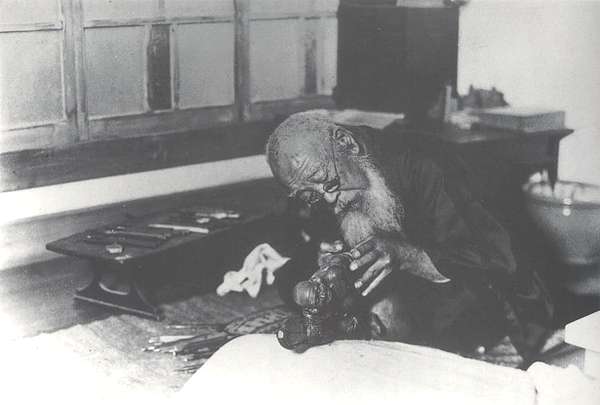 SCULPTOR TAKAMURA, KO-UN |
|
Background When he was a student in Tokyo, Tokutomi spent many hours visiting museums and studying sculpture. He was particularly taken with the art of Takamura Ko-un, an acclaimed sculptor and teacher, who had worked mostly within Buddhist wood-carving traditions, though he had received European training and melded Western elements into some of his compositions. Toku still feels himself under Ko-un's influence. He will occasionally point to a line, a form, or an aesthetic idea in one of his pipes and identify it as an echo of something he used to observe in Ko-un's sculpture. On my recent visit to Japan, I spent a wonderful afternoon with Toku and Barney Suzuki walking through a couple of museums. Toku showed me several sculptures by Takamura Ko-un and spoke enthusiastically about how the artist had captured the liveliness and grace of women's clothing and the supple curves and weight of women's forms. Apparently it was when the young student, Toku, first saw the organic vitality and intense expressiveness of Ko-un's work, years ago, that he became inspired to devote his life to wood-carving. I was very excited when I received this book about Ko-un from Toku a couple of years ago. At last I would see specific examples of Japanese artistic influences on Tokutomi. Eagerly I leafed through the pages, searching the photographs for any lines of connection, any imaginative echoes, that I might be able to see. A few of the resonances that I identified struck me as potentially meaningful and worthy of future study. But I also perceived a number of "imaginative reflections" that seemed more mercurial, more whimsical ... perhaps even frivolous and superficial. A lot of what I saw doubtless existed more in my own mind than between the objects themselves. Yet notwithstanding the lack of rigor in my comparative methods and the many ellipses in my knowledge of Japanese art, I found the entire exercise - including its mixture of the serious and the silly - both fun and rewarding. A few days later, I made a photographic record of my excursion and showed it to Toku, Sykes Wilford, and some other folks ... all of whom seemed to enjoy my imaginative adventure. I reproduce the original pages below, after first re-emphasizing the important caveat: Please remember that the tentative juxtaposition of works by Toku and Takamura Ku-on should not be taken as serious art criticism; it is rather a light-hearted exercise in which I play around with lines, shapes, and forms that seem contrapuntal to my "Gaijin" imagination. I'd be delighted to hear more informed comparisons - or suggestions about other lines of influence - from folks who are better acquainted with Japan. I have a great deal to learn about Japanese art, generally, and Toku's artistic impulses, specifically, before I can understand the web of aesthetic and cultural influences that act upon Tokutomi's pipe-carving. I hope that in the not-too-distant future I'll be able to draw a more thoughtful and more evocative "map of resonance" between Toku and one of his earliest inspirations, Takamura Ku-on. Note: I've included the dates for each carving below in the pop-up balloon, activated by your mouse. |
THE PICTURES AND THE PIPES
|
Some shapes from Buddhist traditions .... Toku once mentioned to me that the "shield" on one of Yuki's 2007 pipes evolved out of a traditional element in Buddhist carvings. |
|
|
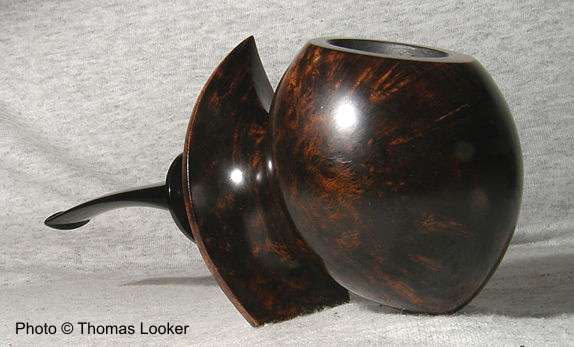
|
|
|
|
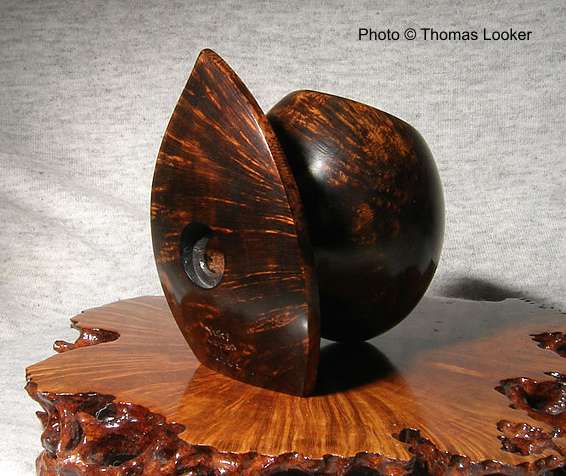
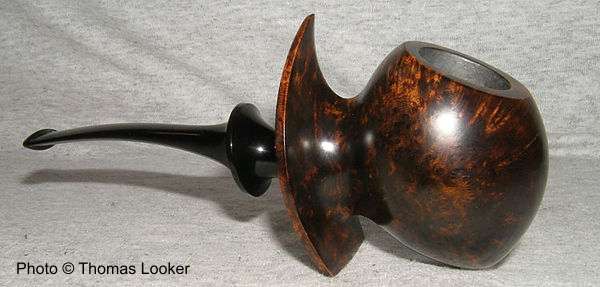
|
The aesthetic of "incomplete space" ... I believe the principle of "incomplete space" is of major importance in much Japanese art. Among other things, it contrasts ideals perfection with imperfection as it asks the viewer to "complete" the composition. Both the Ko-un carvings and Toku's pipes present many examples of these "breaks" of line or form ... these "open" spaces. |
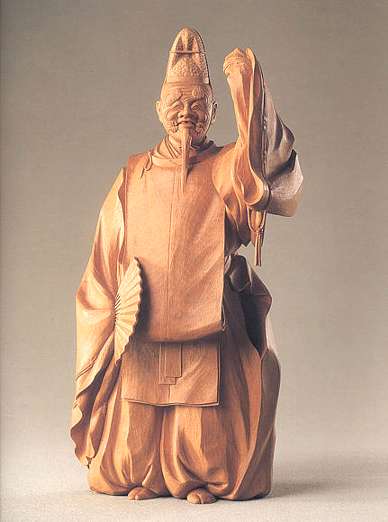
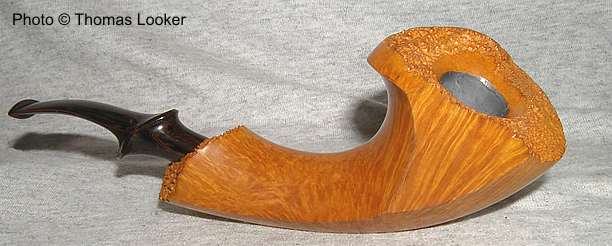

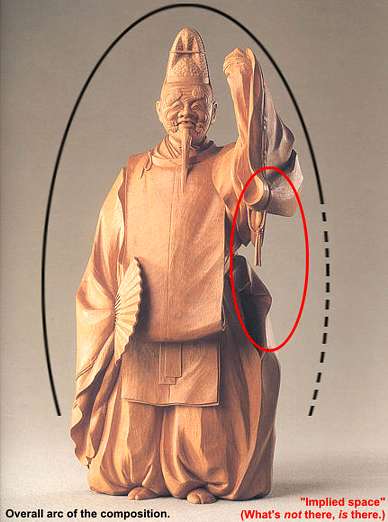

|
Above, an "unfinished" rim, below, an "incomplete" shank. |
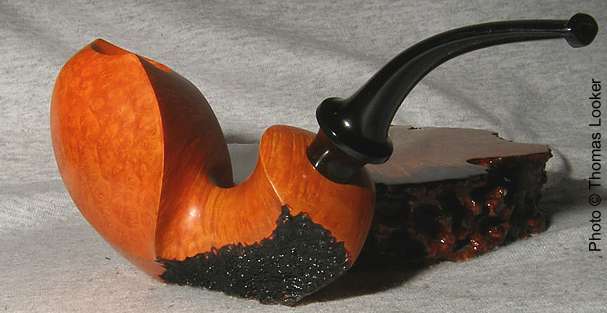
NAVIGATION
END TOKUTOMI AND JAPANESE WOOD CARVING - 1